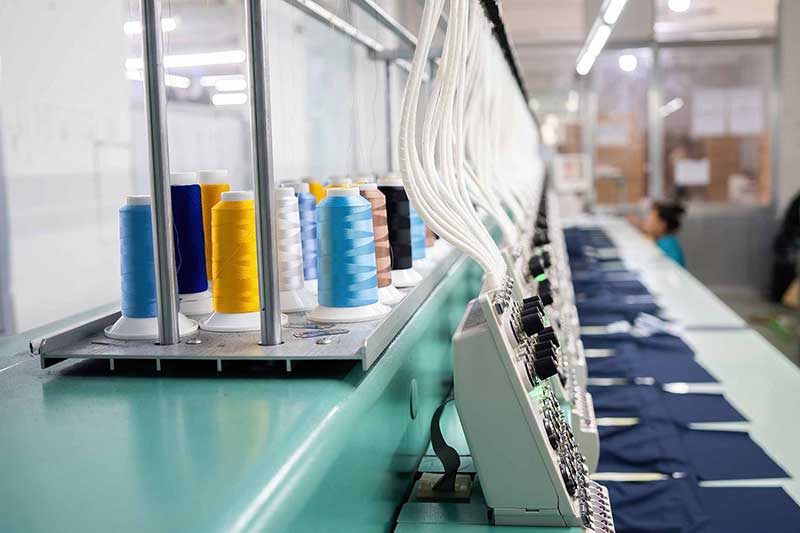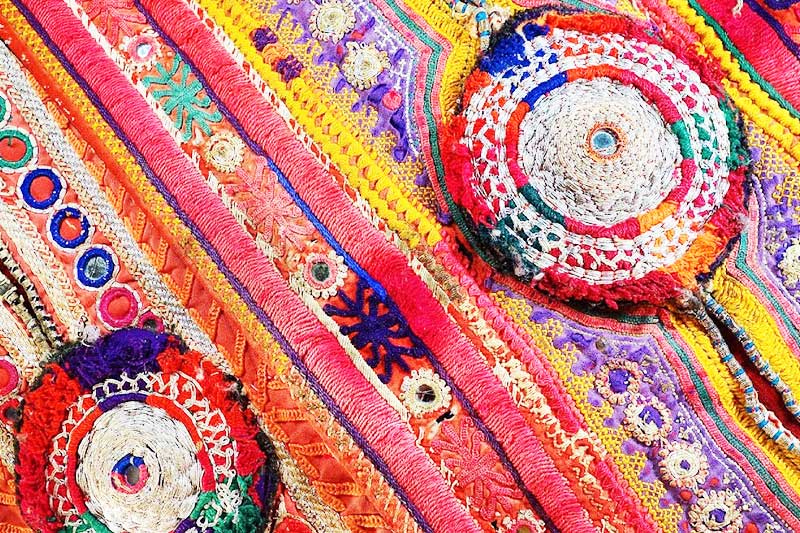India’s Evolving Role in Global Apparel Supply Chains

In the last few years, global apparel supply chains have been tested like never before. From pandemic-related disruptions to rising geopolitical tensions and increasing pressure for sustainability, apparel brands and buyers worldwide are rethinking where, and how, they source their products.
This recalibration has opened new doors for India.
No longer just a backup or a low-cost alternative, India is fast becoming a strategic hub in global apparel supply chains. With strengths across the textile value chain, growing government support, and a reputation for quality and versatility, India’s role is not only evolving, it’s expanding.
So what’s driving this shift, and what does it mean for manufacturers, exporters, and apparel business owners?
Moving Beyond Low-Cost Production
Historically, many global brands looked to South Asia for low-cost production, with Bangladesh dominating in basic garment manufacturing. India was part of this equation, but often not the first choice for high-volume, fast fashion orders.
Today, India is repositioning itself as a value-driven sourcing destination, not just a cost-focused one. Thanks to its integrated textile ecosystem, from fiber to fashion, India offers buyers something few other nations can: end-to-end capabilities.
This means faster turnaround times, better quality control, and more customization, all things that global retailers increasingly value over price alone.
Geopolitical Shifts
Perhaps one of the most significant catalysts behind India’s growing role is the global pivot away from overdependence on one particular source.
The pandemic made it clear how vulnerable global supply chains were to disruptions in a single geography. Add to that the rising costs across the globe, trade tensions among big players, and concerns about forced labor, and you get a major shift in sourcing strategies.
Apparel brands are increasingly looking to India not just as a backup, but as a complementary base that offers reliability, political stability, and long-term growth potential.
Fully Integrated Supply Chain
One of India’s standout advantages is its vertically integrated textile industry.
From spinning and weaving to dyeing, finishing, garmenting, and even accessories, India has it all. This allows manufacturers to offer flexible MOQs (minimum order quantities), faster sample development, and better coordination between stages of production.
Many global buyers who previously struggled with delays and fragmented supply chains in other countries are now viewing Indian suppliers as one-stop solutions.
This integration is particularly important for fashion brands focused on speed-to-market and those adopting more agile inventory models.
Demand for Customization & Sustainability
Another major shift in global sourcing is the increasing demand for customized production and sustainable practices.
Buyers are no longer just asking for cost sheets, they want to know about your processes, your certifications, and your traceability systems. They’re also seeking design input, innovation in finishes, eco-friendly fabrics, and cleaner technologies.
India has responded well to this shift.
- Eco-wash technologies, waterless dyeing, and digital printing are now more widely adopted by Indian manufacturers.
- Many units are GOTS, OEKO-TEX, BCI, or ZDHC certified.
- Designers and merchandisers in India are collaborating more closely with international teams to co-develop collections.
This move towards value-added, sustainable manufacturing aligns perfectly with what the new generation of buyers is looking for.
Export Trends
India’s apparel exports have seen a strong recovery post-pandemic, especially in categories like knits, woven shirts, trousers, and value-added fashion garments.
According to the Apparel Export Promotion Council (AEPC), India is targeting $40 billion in apparel exports by 2030, backed by favorable trade policies, growing demand in newer markets like Latin America and Africa, and stronger partnerships with established markets like the U.S., EU, and UK.
Additionally, new Free Trade Agreements (FTAs) with countries like Australia, UAE, and potentially the UK and EU are poised to give Indian exporters a stronger price advantage.
The shift is not just about exporting more, it’s about exporting smarter, with better product diversity, improved compliance, and enhanced global competitiveness.
Government Support & Infrastructure Development
The Indian government is actively working to strengthen the country’s textile and apparel competitiveness through:
- PLI (Production Linked Incentive) schemes
- PM MITRA mega textile parks
- Ease of doing business initiatives
- Support for technology upgradation and digitization
These initiatives aim to build world-class infrastructure and reduce bottlenecks in manufacturing and exports.
For manufacturers, this means access to better logistics, reliable utilities, skilled labor, and financial incentives, all of which make India a more attractive base for scaling operations.
The Opportunity for Business Owners & Exporters
So what does all this mean for Indian manufacturers, exporters, and apparel business owners?
As global brands revisit their sourcing strategies, Indian businesses that invest in the following will find themselves in a very strong position.
- Modern technologies
- Sustainability
- Vertical integration
- Certifications and compliance
- Design innovation and sampling capabilities
This isn’t just about catering to demand, it’s about shaping it. Indian suppliers who present themselves as solution providers, not just vendors, will win long-term business and global recognition.
India at the Forefront of Apparel’s Global Evolution
India’s role in global apparel supply chains will continue to evolve in the coming years.
From being seen as a mid-tier, volume player, it is steadily moving toward becoming a global sourcing powerhouse known for quality, flexibility, sustainability, and innovation.
This is the time to rethink strategies, enhance capacities, and align with global trends. Whether you’re a large exporter or a growing garment unit, the global supply chain is being rewritten, and India is one of the authors.
India is no longer a secondary option for apparel sourcing, it’s stepping into a leadership role by offering value, agility, and sustainability in a transforming global market.
With rising global demand for responsible manufacturing, diverse product capabilities, and shorter supply chains, India is set to play a central role in shaping the future of apparel sourcing. For businesses operating in this space, the opportunity lies in aligning with these shifts, by investing in innovation, building stronger buyer relationships, and showcasing capabilities on the right platforms.
One such platform is Gartex Texprocess India, the country’s leading show for garment and textile manufacturing solutions. It offers a gateway to connect with top decision-makers, explore new technologies, and position your business in the evolving global supply landscape.
Don’t miss your chance to be where the future of apparel manufacturing unfolds.
More News
Smart Factories: How Automation & Software Are Transforming Textile Manufacturing
Smart Factories are no longer a futuristic concept; they are rapidly becoming the foundation of modern textile manufacturing. By integrating automation, robotics,…View More
Smart Machines, Smarter Business – Functional and Technical Machines Creating New Opportunities in Apparel
The apparel industry is no stranger to reinvention. From the earliest handlooms to the modern factory floor, every era has been defined…View More
Rural India’s Design Labs: Where Craft Meets Contemporary
The overlooked rise of design innovation beyond urban India In the vast, textured fabric of India's garment and fashion industry, the story…View More
Quality Control in Garment Manufacturing: What’s Changing in 2025?
In 2025, garment manufacturing is entering a new era—one defined not only by speed and scale, but by precision, consistency, and sustainability.…View More
How to Identify Authentic Indian Handloom Products?
Indian handloom products are a timeless testament to the country’s rich cultural heritage and craftsmanship. From luxurious Banarasi silks to timeless Khadi…View More
Download
Register Now
Recent Posts
Show Countdown
DELHI
Bharat Mandapam (Pragati Maidan), New Delhi, India
- days
- Hours
- Minutes
- Seconds
MUMBAI
Bombay Exhibition Center, Mumbai







